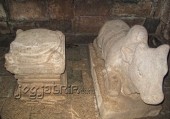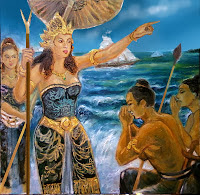GEDONG SONGO TEMPLE

Gedong S anga or Gedong Songo is located in Desa Candi, Bandungan Subdistrict, Semarang Regency or exactly at the slope of Mount Ungaran, at about 1.200 m above sea level. The closest route to the temple is Semarang - Bandungan. After Bandungan Traditional Market at the centre of Bandungan Town, take the route at the left side, about 350 m, and find a junction and then turn right, until end of the street. At the end of the street, we find Gedong Songo Tourism Place. Afterwards, we continue the journey by walking along the path to Gedong I, Gedong II, until Gedong VII. Sometimes the area of Mount Ungaran covered by mist. At the north, we could see panorama of Ungaran and at the south-west, we find the magnificent Mount Telomoyo, with so many hills and rice fields. Gedong Songo Complex has a beautiful natural panorama at every side of it. Gedong Songo was first found by Loten in 1740. Then in 1804 Sir Thomas Stanford Raffles, the governor of British Government in Java rec...





